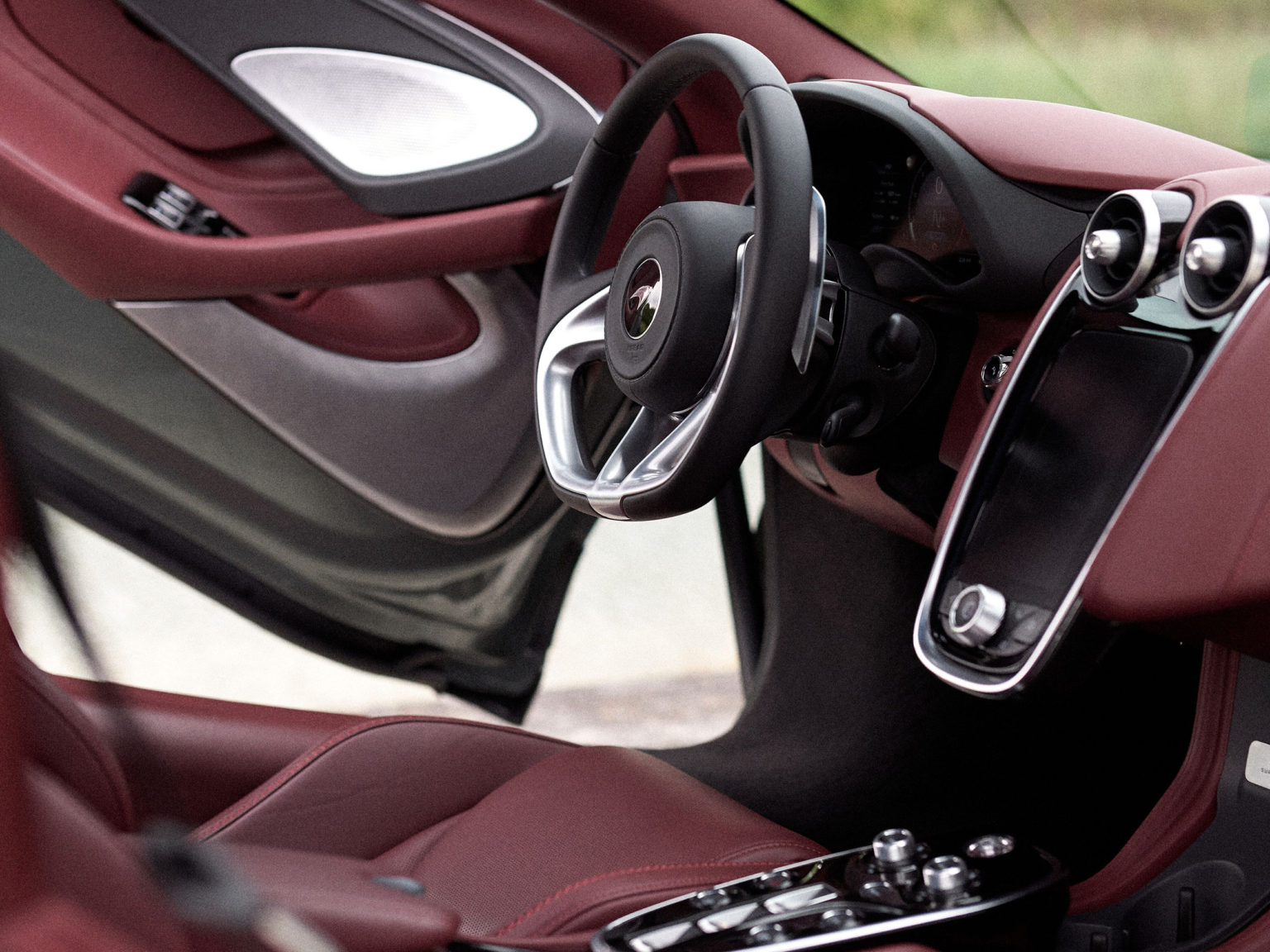The sleek design on the exterior of most supercars is matched by its interior. There aren’t plush surfaces. Aesthetic softness has given way to straightforward design and luxurious materials. The McLaren GT is no different.
What is different about the cabin of the GT is what materials fill it and where the company sought inspiration for them. That is the subject of the latest video from the McLaren Tech Club.
McLaren’s design team sought inspiration from non-traditional sources.Photo courtesy of McLaren Automotive Ltd.
To get to the current materials mix in the GT, the McLaren design team explored alternatives to traditional coverings in the car in places like the luggage area, on seats, and in the trim pieces. They also took into account the tactile quality of the materials used, focusing on the user experience from a tactile and operational perspective, equally. The greatest example of this can be found in the curled aluminum of the driver controls.
The concept of lightweighting cars is about more than just the chassis, engine, and body panels. It also extends to the interior. Materials like leather can add pounds to the overall weight of the car. However, it looks good and customers respond to its aesthetic appeal. But, leather doesn’t have to be everywhere in the vehicle.
A new material called SuperFabric was originally designed for military and aerospace operations. It has many redeeming qualities. It’s abrasion, slash, stain, and rodent resistant. It’s breathable yet durable. Most importantly, perhaps, for McLaren, it’s available in numerous patterns, designs, styles, and colors.
What makes it so durable? The woven fabric is infused with a tiny layer of armored guard plates. It is then embossed with a hexagonal pattern.
SuperFabric is a new material that holds up well to wear and tear.Photo courtesy of McLaren Automotive Ltd.
In addition to lightweighting initiatives, McLaren designs sought to bring finer materials to the GT. Now, whether a buyers chooses supple Nappa leather or upgrades to softgrain leather Alcantara, all the materials will be sourced from Scotland’s Bridge of Weir company.
Alternatively, cashmere, as seen in the McLaren Verdant Theme GT concept car, is available in Dove Gray or Jet Black.
“Introducing innovative new interior materials for any McLaren is a huge challenge,” said Jo Lewis, Colour and Materials Design Manager, McLaren Automotive Ltd. “With the GT we were creating beauty and luxury but with the additional layers of functionality and advanced technology that are inherent in every car we design – and all delivered in a very modern way. Everything in a McLaren is there for a reason, not simply to look good; the materials need to be authentic not only in appearance and to the touch, but also in meeting our requirements for minimizing weight and performance in use.”
The new materials are featured throughout the cabin. Photo courtesy of McLaren Automotive Ltd.
Designers sought to bring intention to their styling as well. Finishers, bezels, paddles and switches made of knurled aluminum are designed to establish a level of sophistication as well as reinforce McLaren’s focus on technical precision.
The same can be said for the “hidden until lit” ambient lighting in the model, a first for McLaren. The lights are first shown as a finishing strip of sold metallic finish but glow once the ignition is turned on. This is similar to how the headlights on the 2020 Hyundai Sonata react, however that lighting is on the exterior. The McLaren lights change color at the command of the driver, a feature that has similar tech to what you’ll find in BMW and Kia models.
To learn more, watch the latest episode of the McLaren Tech Club below:
McLaren Tech Club – Episode 6 – How does McLaren use pioneering, space-age materials in the New GT?
www.youtube.com








